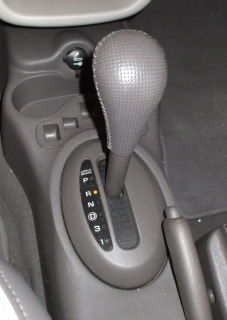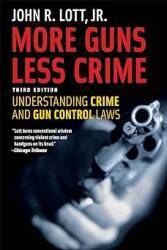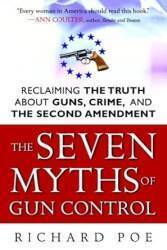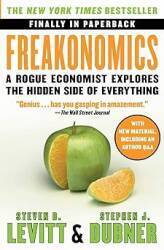
Guns, Swimming Pools, and Statistics
Which causes more accidental deaths: guns or swimming pools?
Guns are portrayed as being very dangerous objects that kill enormous numbers of children every year. Yes, guns are dangerous weapons, and they should be kept securely locked away from children. However, a swimming pool is far more likely to cause the accidental death of a child. How much more? Can we estimate the relative probabilities? Yes we can!
We need some basic figures:
- Number of swimming pools in the U.S.
- Number of privately owned firearms in the U.S.
- Number of U.S. households with firearms.
- Accidental deaths due to firearms.
- Accidental deaths due to drowning in swimming pools.
Number of pools and hot tubs in the United States:
A Google search for "how many swimming pools in the U.S." yields a number of pages with identical text claiming that their data comes from a 2004 report by the International Aquatic Foundation, although the referenced URL just leads to some domain-parking page. The Aquaticnet.com page seems somewhat authoritative. Those statistics, for 2004, are:
| 4,544,000 | residential in-ground pools |
| 3,535,000 | residential above-ground pools |
| 5,170,000 | residential hot tubs |
| 270,000 | commercial swimming pools |
That makes for a total of 13,519,000 pools and hot tubs, or 8,349,000 for swimming pools alone.
Residential pools outnumber commercial or public pools by a factor of about 30 to 1, so it will make little difference whether we include non-residential pools or not. I don't know how many non-residental hot tubs there are, but I can't imagine that there are very many. A city of a million people would have just a few hotels with non-residential hot tubs.
The most recent CDC data I have found divides causes into categories of "bathtub", "private pool", "public pool", "unspecified pool", "natural water, including boating", and "all other and unspecified." I don't know where they put hot tubs.
A company selling market research reports stated that the number of pools alone was 8.6 million in 2007, so while these numbers are of unknown accuracy, at least they reinforce each other.
Number of privately owned firearms in the U.S.:
The Bureau of Alcohol, Tobacco, Firearms, and Explosives estimated that there were 215 million privately owned firearms in 1999 [1], and the Bureau of Justice reported 72 million approved new and used firearm transactions between 1999 and 2007 [2]. BATFE estimates an annual rise of 4.5 million [3], which would indicate 219.5 million in 2000, 237.5 million in 2004 and 251 million in 2007. However, the ownership is not evenly distributed. A more useful value is the number of households with at least one firearm.
Number of U.S. households with firearms:
A 1993 Gallup poll estimated that 49% of U.S. households have at least one gun. An article in the journal Injury Prevention in 2004 estimated that it was 38% of households. All these estimates are extrapolated from surveys of a few hundred to a few thousand people.
The 2000 Census reported a U.S. population of "281.4 million people, of whom 273.6 million were living in 105.5 million households." I don't know who those other 7.8 million people not living in households might be (military, college students, and prisoners would be my best guess), but 38% and 49% of that total means 40.1 to 51.7 million households with guns.
Accidental deaths due to drowning and firearms:
"National Vital Statistics Report, Vol. 50, No 15", from the Centers for Disease Control and Prevention (Sep 16, 2002), lists causes of death for the year 2000. See its Table 10 on page 30, "Number of deaths from 113 selected causes by age". It includes the following data:
| Causes of Death, 2000 | |||||||||||||
| Age in years | all ages | <1 | 1-4 | 5-14 | 15-24 | 25-34 | 35-44 | 45-54 | 55-64 | 65-74 | 75-84 | ≥85 | not stated |
| Drowning or submergence | 3,482 | 75 | 493 | 375 | 646 | 419 | 480 | 354 | 217 | 179 | 156 | 64 | 24 |
| Accidental firearm discharge | 776 | 1 | 18 | 67 | 202 | 131 | 153 | 78 | 50 | 41 | 24 | 11 | 0 |
I am puzzled and disappointed by their listing of both "Fatal Drowning" and "Non-Fatal Drowning." CDC, learn to speak English! Drowning is death by water, while near drowning is almost dying because of water. Similarly, when you receive a bad but non-fatal electrical shock, what happened is that you were shocked. If it actually kills you, then that is electrocution.
More useful data on drowning is listed in the CDC's Drowning — United States, 2005—2009 report, part of their MMWR or Morbidity and Mortality Weekly Report of May 18, 2012 (vol 61, number 19, page 344-347). To just list what actual speakers of the English language would correctly call "drowning" (that's the fatal variety, you see), the annual averages for 2005-2009 were:
| Age in years | all ages | 0-4 | 5-14 | ≥15 | unknown |
| Drowning deaths | 3881 | 513 | 252 | 3,107 | 9 |
That same report has a graphic showing locations of drowning. I printed the graphic and measured the segments to the nearest millimeter. From 0 to 100% was 74 millimeters, so I scaled all the segment measures by a factor of 100/74 and rounded the result to the nearest whole number percentage. Those locations are:
| Location of drowning | 0-4 years | 5-14 years | ≥15 years |
| Bathtub | 15% | 5% | 11% |
| Pool | 50% | 31% | 11% |
| Natural water, including boating | 15% | 46% | 58% |
| All other and unspecified | 20% | 18% | 20% |
Let's assume that the distribution of drowning locations did not change significantly over the period from 2000 to 2009. We can use this location information to calculate the number of deaths due to accidental firearms discharge, and to estimate with fairly high certainty the number of drowning deaths in swimming pools only:
| Age in years | 0-4 | 5-14 | ≥15 |
| Drowning deaths in swimming pools annually 2005-2009 | 257 | 78 | 342 |
| Death by accidental firearm discharge in 2000 | 19 | 67 | 690 |
Also note that according to the State Farm insurance company in 2011, about 183 children under the age of 15 are killed every year in the U.S. by a car backing over them in the driveway. That's over twice the number killed by accidental firearms discharges. The U.S. Department of Transportation estimated that driving while drowsy causes 71,000 injuries and 1,550 deaths per year in the U.S. That's just about 40-45% of the number of drowning deaths and twice the number of accidental firearms discharges deaths. But before we ban cars, let's do some analysis.
The Numbers
| Number | Measure or Annual Average | Year(s) |
| 8,079,000 | Residential swimming pools | 2004 |
| 219,500,000 | Privately owned firearms | 2000 |
| 40,100,000 | Households with guns (low estimate) | 2000 |
| 51,700,000 | Households with guns (high estimate) | 2000 |
| 677 | Americans killed by drowning in swimming pools | 2005-2009 |
| 335 | Children 0-14 killed by drowning in swimming pools | 2005-2009 |
| 776 | Americans killed by accidental discharge of firearms | 2000 |
| 86 | Children 0-14 killed by accidental discharge of firearms | 2000 |
Now we can calculate rates. Notice that firearms are far more common than swimming pools. We need to scale the death rates by the prevalence of the underlying causes if we are going to estimate the conditional probability — given that risky item X exists in a household, what is the likelihood that it will lead to an accidental death?

Цар Николай II
You have to be careful when calculating or discussing probability, especially when what you're really discussing is conditional probability. The probability of X given Y is very different from the probability of Y given X.
For example: If you were a member of the Russian royal family, then there would be a much higher than usual likelihood that you had hemophilia. But that does not make the converse true: Just because you happen to have hemophilia does not mean that you are probably Russian royalty!
| Number | For the entire population |
| 8.380 | Swimming pool drowning deaths per 100,000 residential swimming pools |
| 1.501—1.935 | Accidental firearm deaths per 100,000 households with at least one firearm |
| 0.354 | Accidental firearm deaths per 100,000 firearms |
If we calculate the rates per 100,000 instances of the risk, the numbers will be a little easier to compare. The estimates for gun-owning households is shown as a range, as the number of those households is itself a range. First, for the entire population, see the table above.
And, for children less than fifteen years old see the table below:
| Number | For children less than 15 years old |
| 4.147 | Swimming pool drowning deaths per 100,000 residential swimming pools |
| 0.166—0.214 | Accidental firearm deaths per 100,000 households with at least one firearm |
| 0.039 | Accidental firearm deaths per 100,000 firearms |
So, having a swimming pool in a household is something like 4.3 to 5.6 times as likely to lead to an accidental death as having a firearm, when we look at the numbers for all age groups. For children less than 15, the difference is more like 19 to 25 times as likely.
I was very surprised by these results! I would have guessed that the accidental death rate for drowning was higher, but not by the factor of 19 to 25 that we see for children!
According to a 2007 Department of Transportation study, there were an estimated 254.4 million registered passenger vehicles (cars, pickup trucks, SUVs and minivans) in the United States. The U.S. Census Bureau estimates 114.8 million households in the U.S. in 2010, and an estimated 91.7% of these, or 105.3 million households, own at least one passenger vehicle. Doing the same math for what the State Farm insurance company classifies as a "back-over accident", in which a child less than 15 years of age is killed when a car backs over them, usually in a driveway, we get:
| Number | For children less than 15 years old |
| 0.174 | Back-over deaths per 100,000 households with at least one passenger vehicle |
| 0.072 | Back-over deaths per 100,000 passenger vehicles |
So, while a passenger vehicle is not nearly as dangerous as a swimming pool or hot tub, one of them is still almost twice as likely to fatally back over a child as a firearm is to accidentally shoot a child. (0.072 versus 0.039 per 100,000)

Reverse gear: twice as likely as a gun to kill a child.
I looked into this after seeing it mentioned in Freakonomics: A Rogue Economist Explores the Hidden Side of Everything, by Steven Levitt and Stephen Dubner. It's a fascinating book — it's filled with surprising explanations of just why things work the way they do. I found it interesting that while one of their examples is how a swimming pool is so much more likely to cause an accidental death than a firearm, they strongly questioned the statistical analysis and conclusions of the standard pro-gun reference More Guns, Less Crime.
Another interesting table in Freakonomics is the following one, based on "Secular Trends of Violence, Evidence, and Theoretical Interpretations" by the criminologist Manuel Eisner, Crime & Justice: A Review of Research 3 (2003), also in "Violence and the Rise of Modern Society", Criminology in Cambridge, Oct 2003, pp 3-7:
| Homicides per 100,000 people | |||||
| England | Netherlands & Belgium |
Scandinavia | Germany & Switzerland |
Italy | |
| 13th/14th Century | 23.0 | 47.0 | — | 37.0 | 56.0 |
| 15th Century | — | 45.0 | 46.0 | 16.0 | 73.0 |
| 16th Century | 7.0 | 25.0 | 21.0 | 11.0 | 47.0 |
| 17th Century | 5.0 | 7.5 | 18.0 | 7.0 | 32.0 |
| 18th Century | 1.5 | 5.5 | 1.9 | 7.5 | 10.5 |
| 19th Century | 1.7 | 1.6 | 1.1 | 2.8 | 12.6 |
| 1900-1940 | 0.8 | 1.5 | 0.7 | 1.7 | 3.2 |
| 1950-1994 | 0.9 | 0.9 | 0.9 | 1.0 | 1.5 |
Also see Steven Pinker's The Better Angels of Our Nature: Why Violence Has Declined, which explains a number of historical trends. And it was even worse in prehistoric times. A cemetery in west-central Illinois dating from before European contact contains 264 skeletons, of which 43 or 16.3% had died violently. A prehistoric burying ground in British Columbia showed that 20% of the people had died violently. A Mesolithic era burial ground in southern Sweden showed 8.3% violent death rate.
Moving into the historic period, Pinker found even higher homicide rates than in the above table from the 2003 study. He found that English court records showed that 14th century London had a homicide rate around 55 per 100,000, and Oxford's was 100 per 100,000. In the 15th century, Amsterdam's homicide rate was about 50 per 100,000, and in the 16th century, Italy's was 30 to 70 per 100,000.
Michael Wood's In Search of England tells us that during the 13th century, 40% of all crime which came to court in England was larceny, largely of farm stock. 20% was burglary (forced breaking and entering), 10% was robbery, and homicide was the subject of nearly 20% of court cases!
Compare that to today's U.S., seen as a violent society, where only about 0.5% of crimes are homicide. London had 5 murders per year per 10,000 people back in the 13th century, while Miami ("murder capital of US" in 2001 when he wrote that book) had 1.5.






